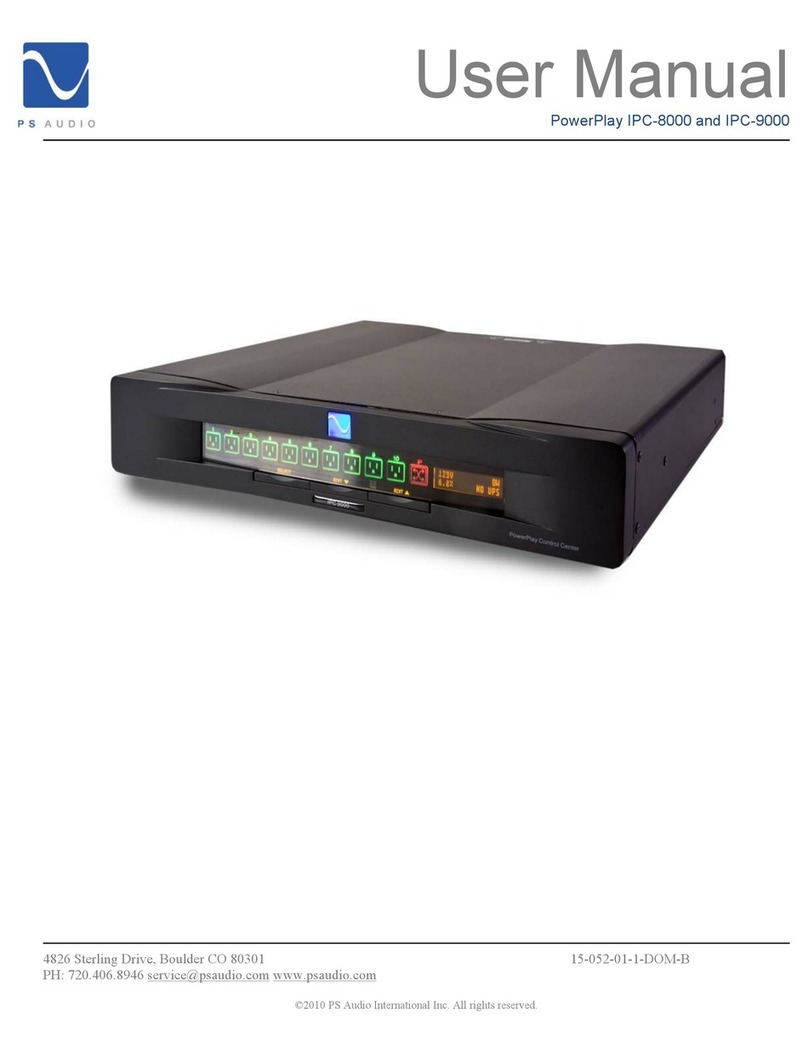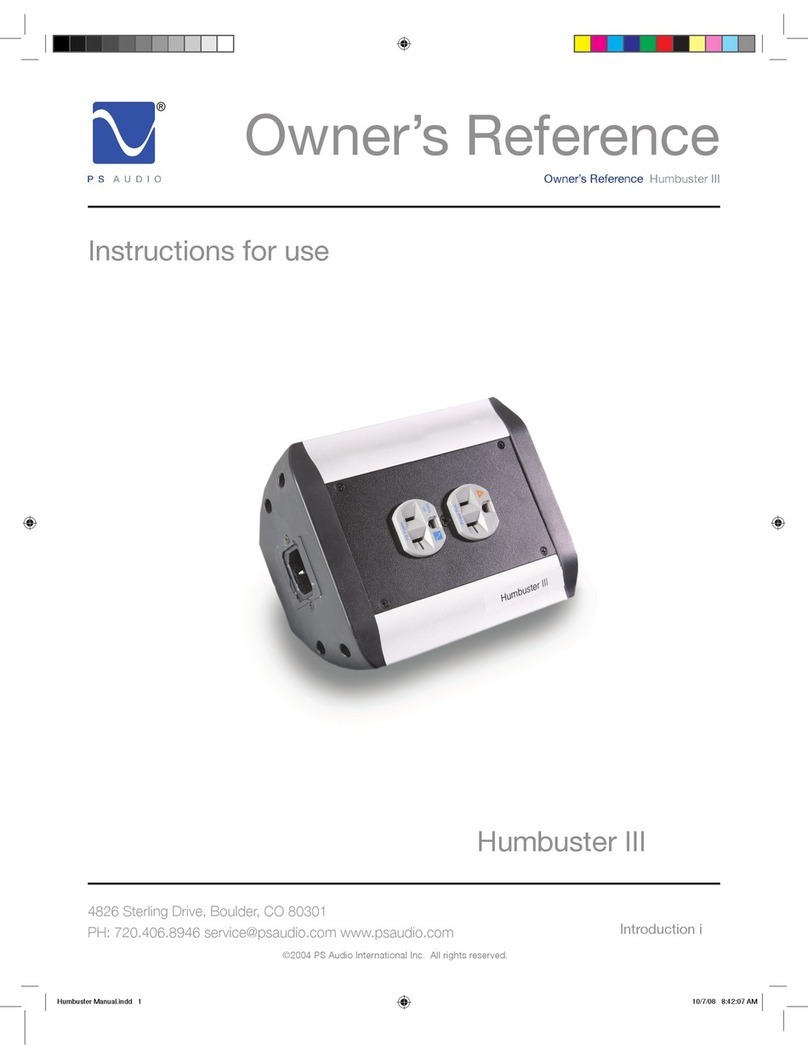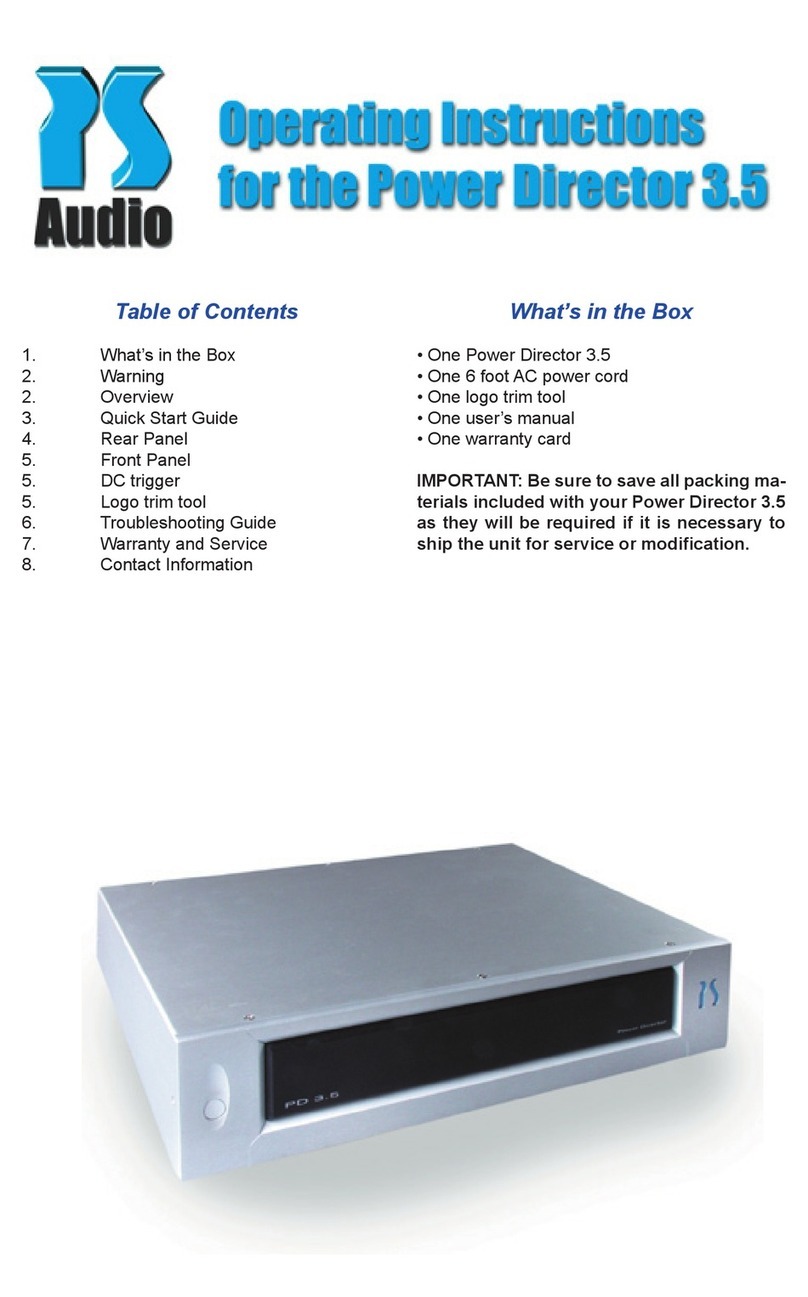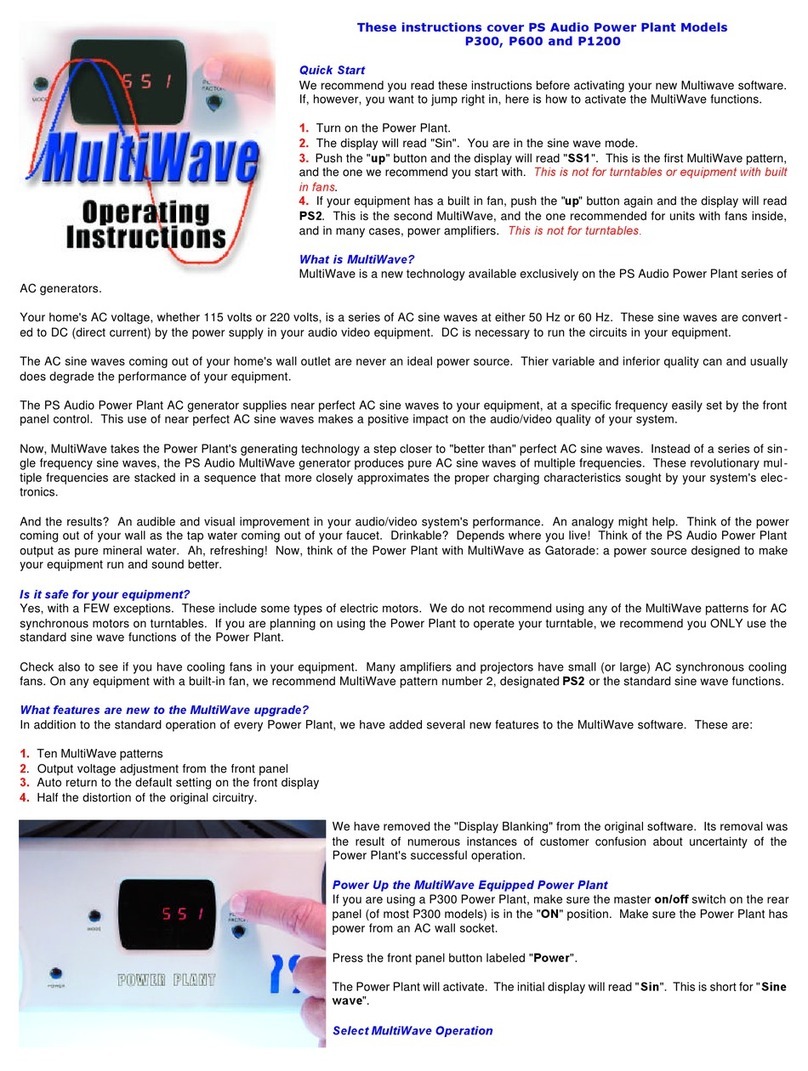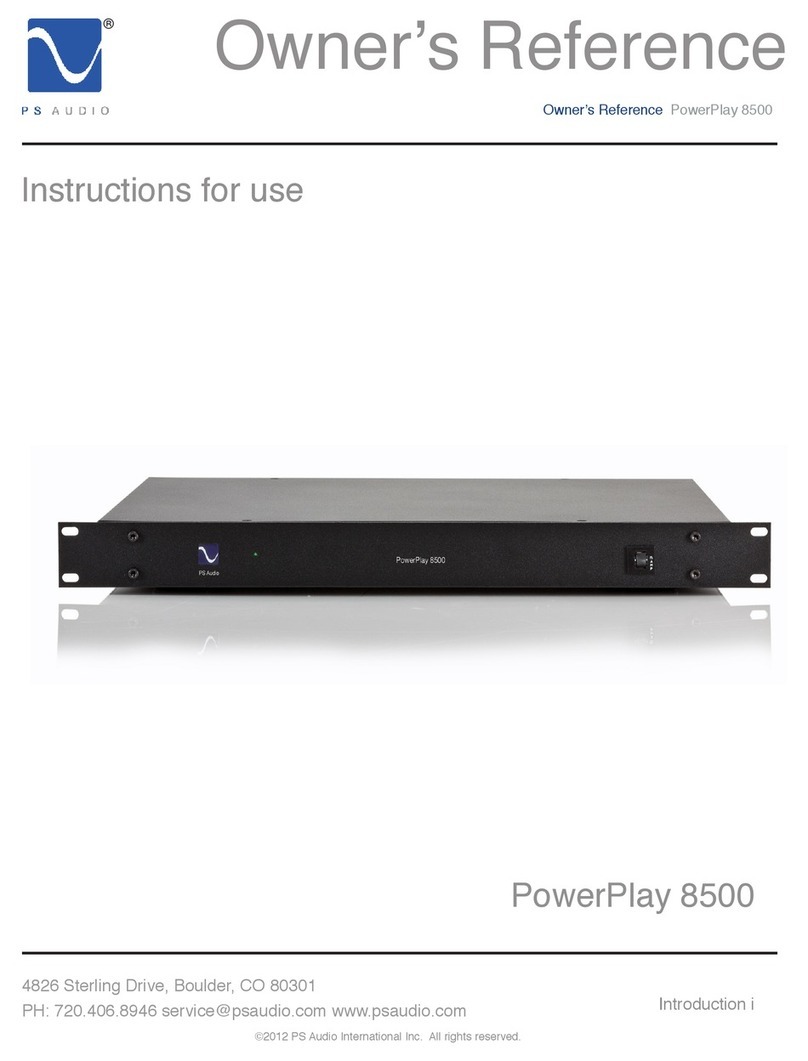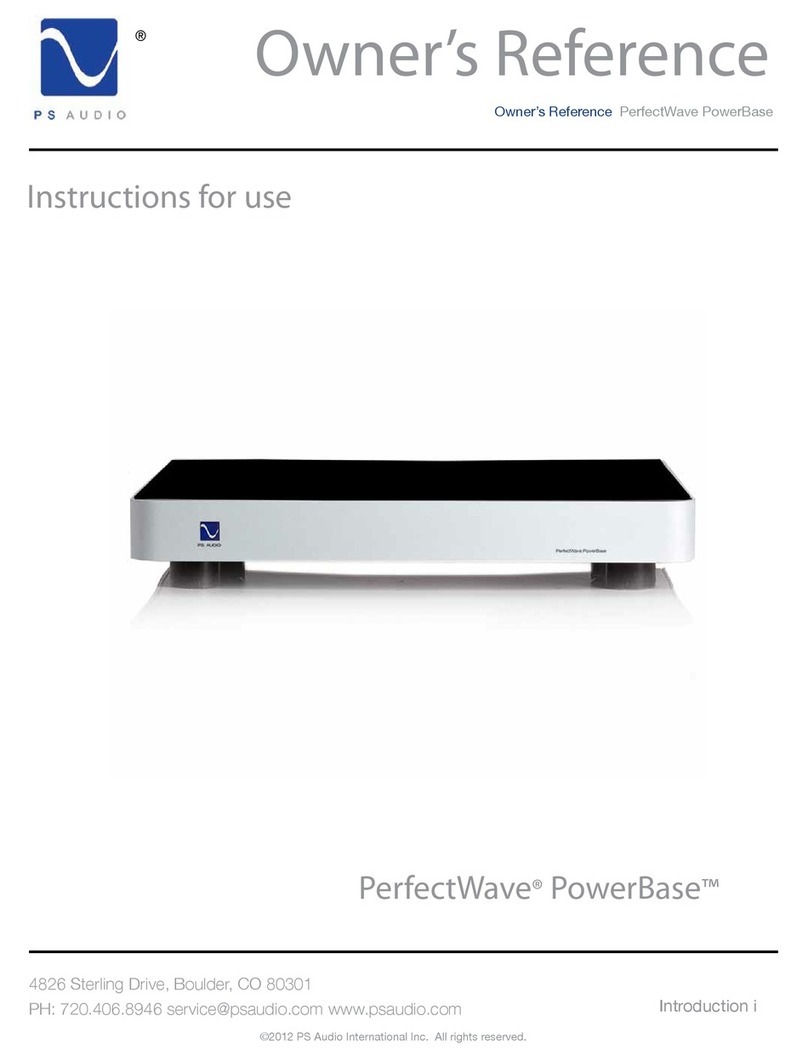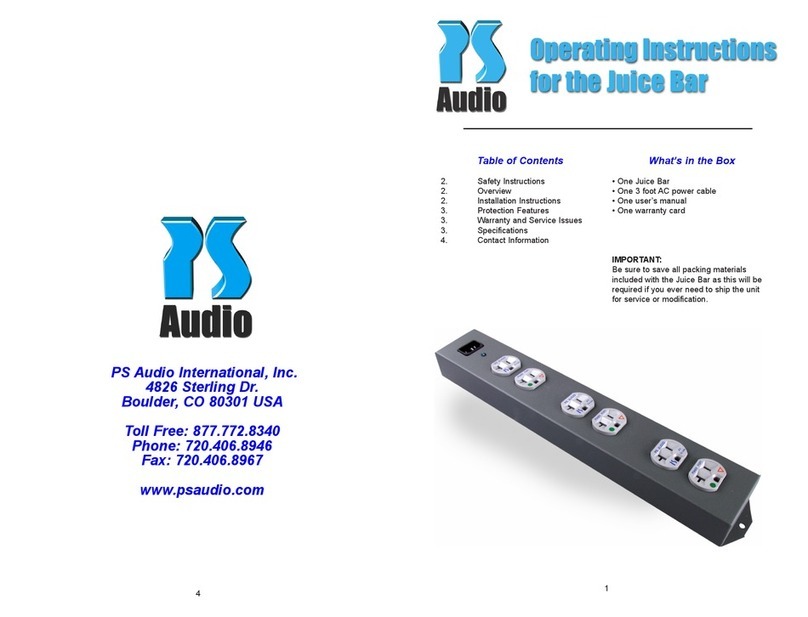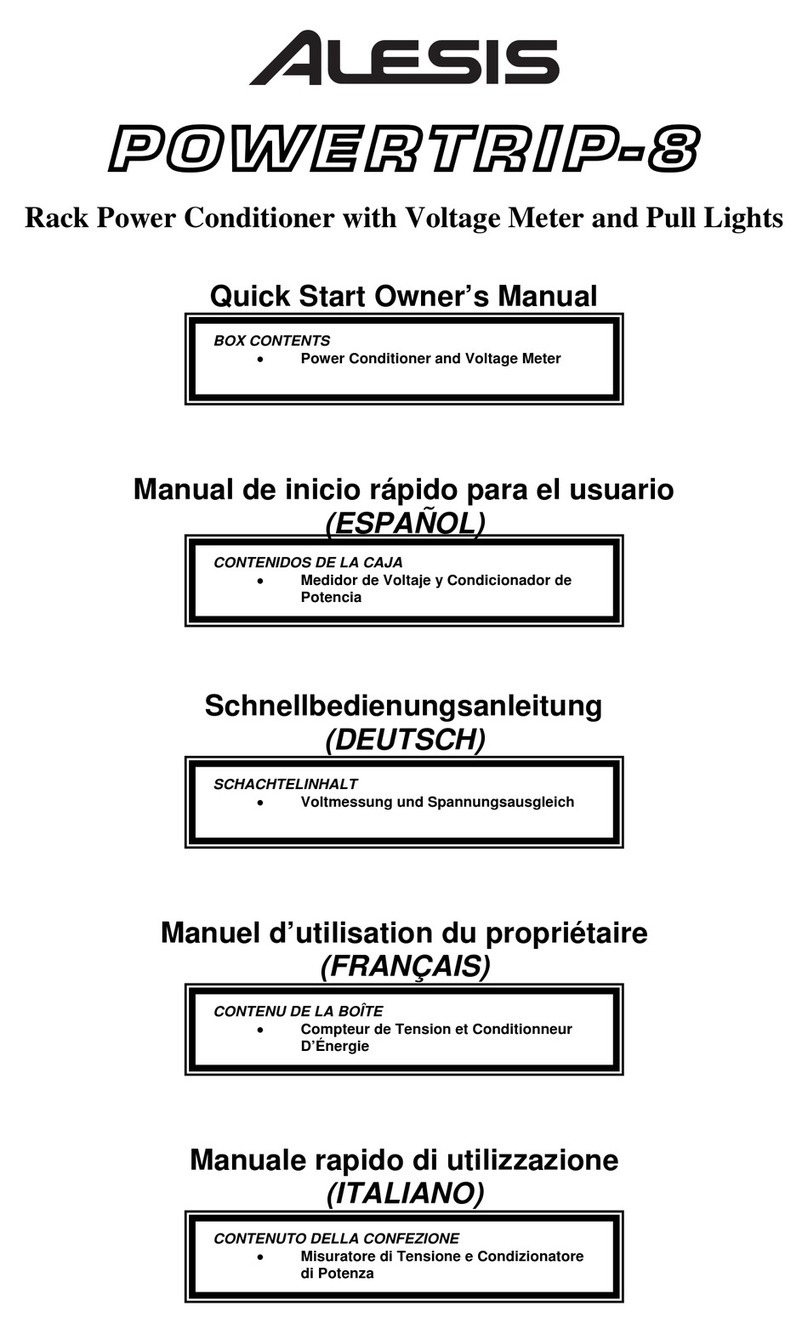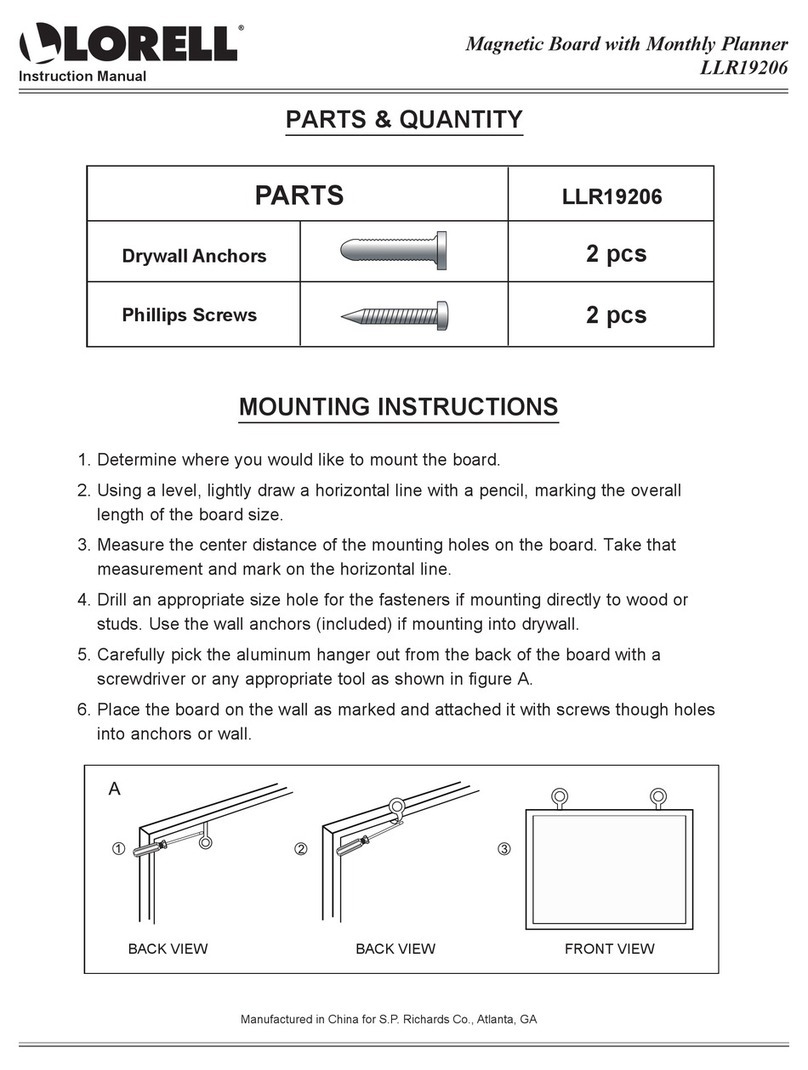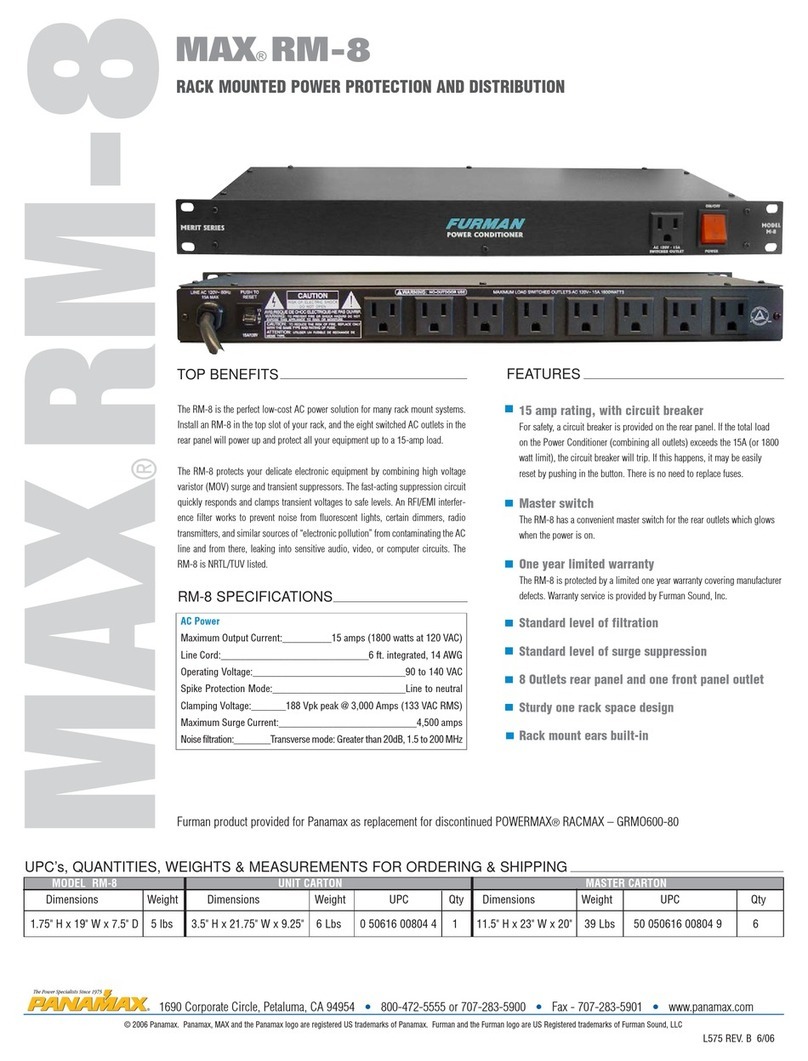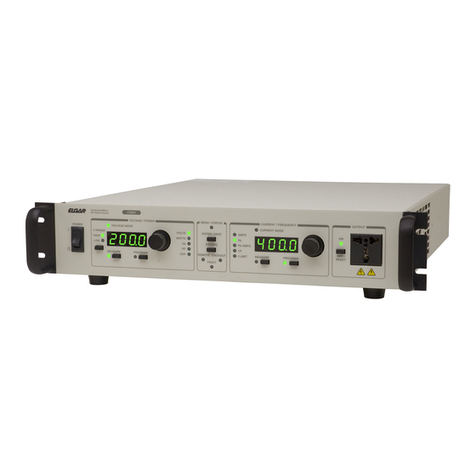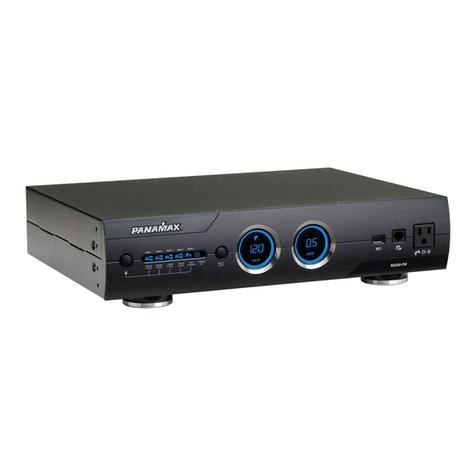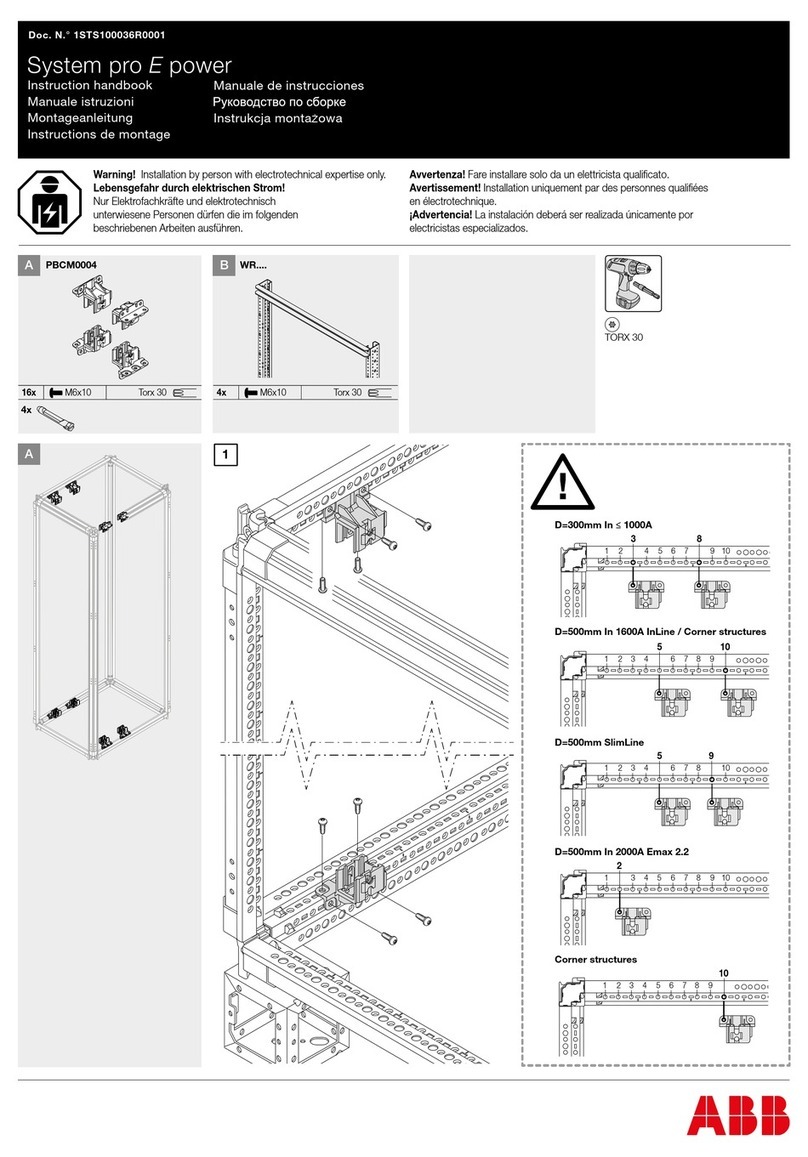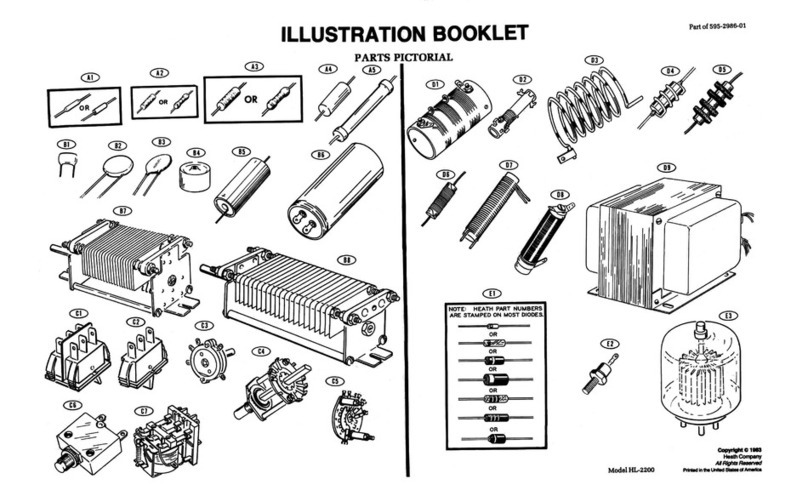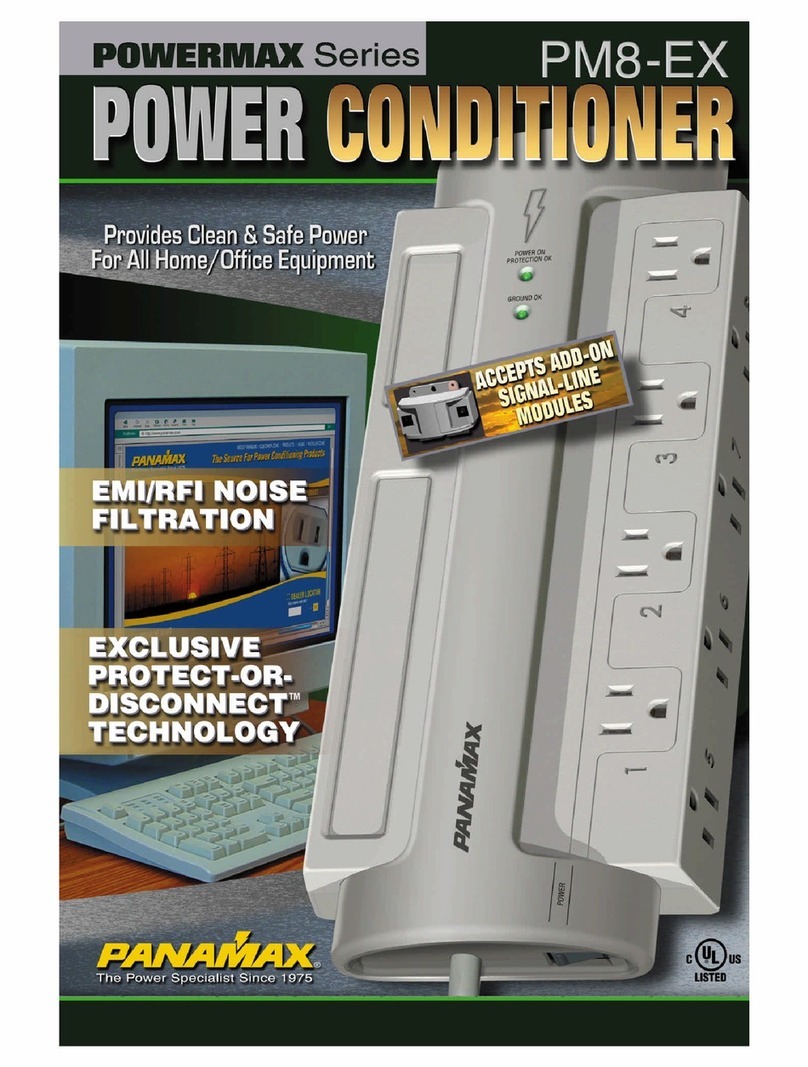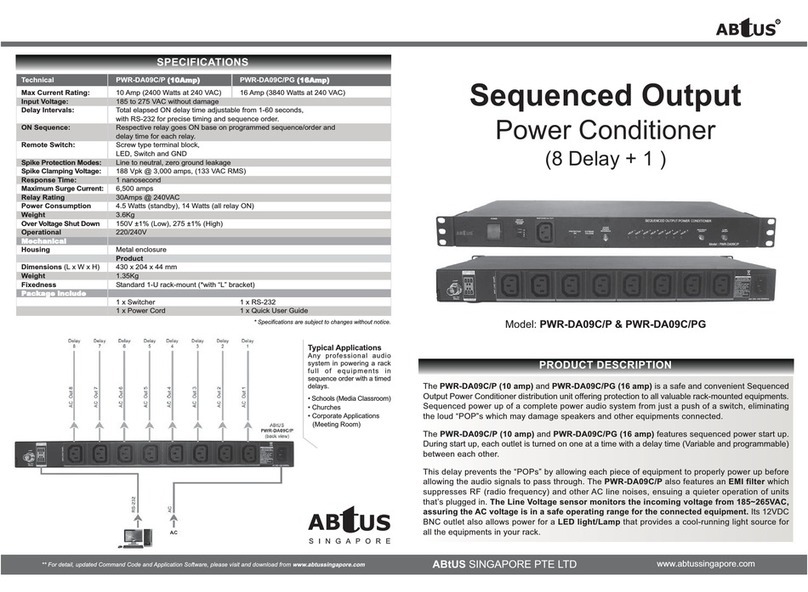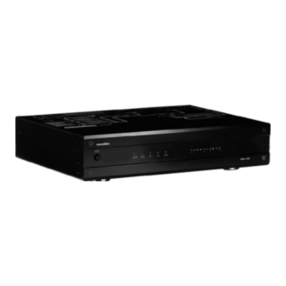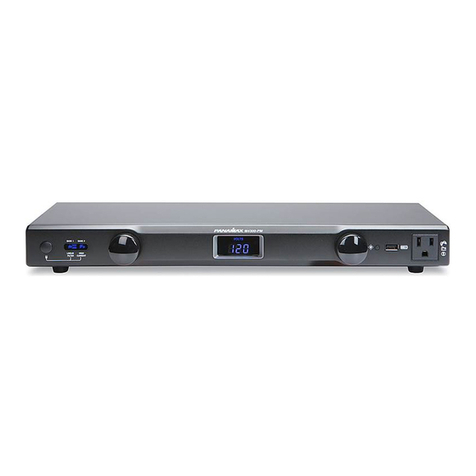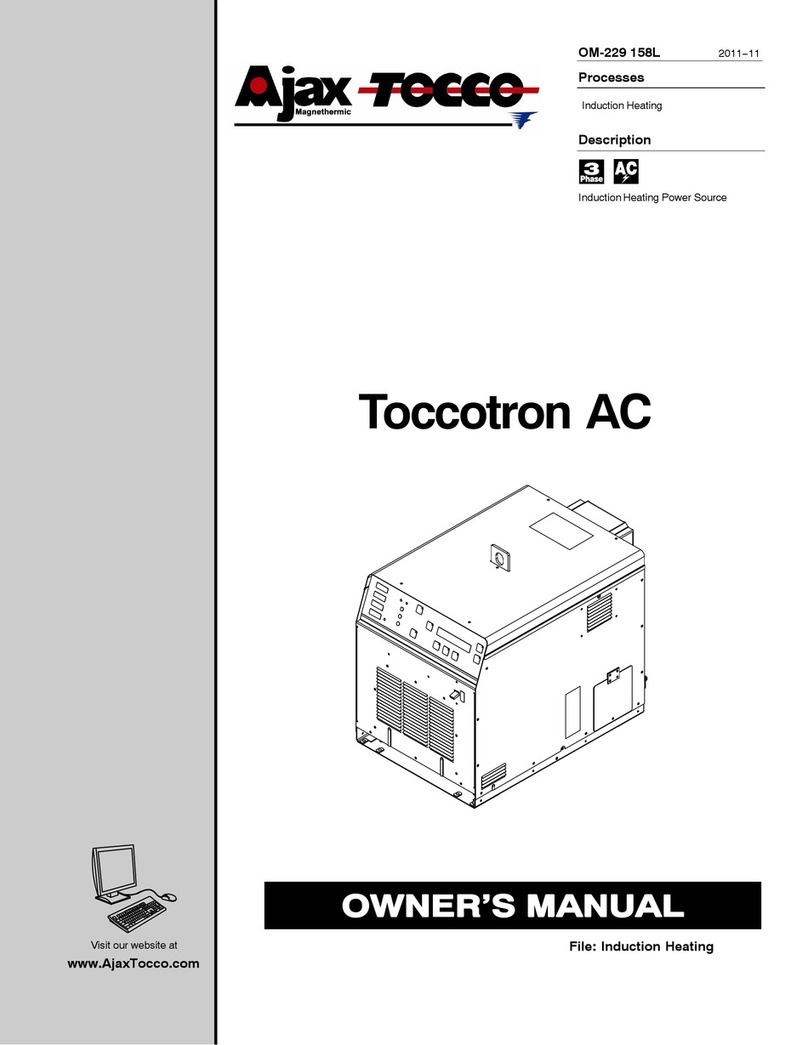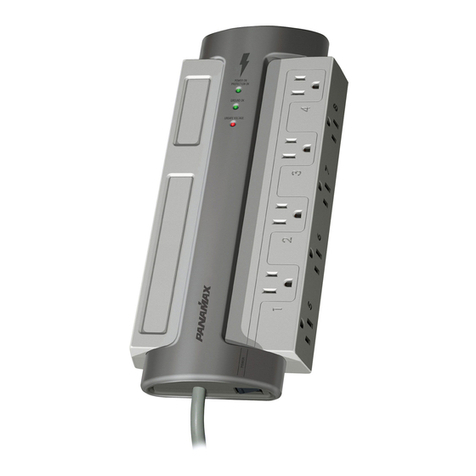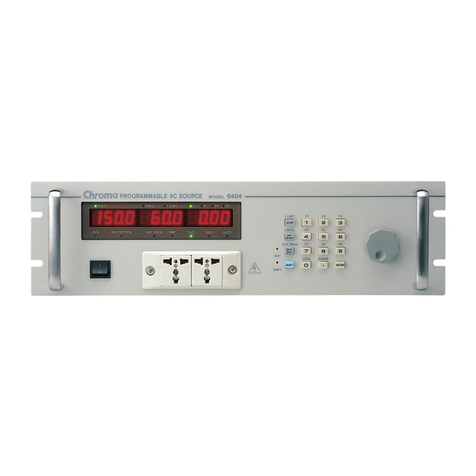
4826 Sterling Drive, Boulder, CO 80301
®Quick Start Guide
©2010 PS Audio International Inc. All rights reserved.
Owner’s Reference PerfectWave Power Plant 5
We recommend that you power the entire system down before attempting to connect equipment
to the Power Plant 5. Integrate the P5 into your system, plug in the desired gear (which has been
powered-down) and activate the P5 with the back-panel power switch. After the AC Regenerator
inside your Power Plant 5 has synchronized with your incoming power, your system will power up
automatically. Now just add music!
Plug the P5 into an AC receptacle with at least 15 amps of service (in the US) or 7.5 amps of
service (in 230 volt regions), preferably using a dedicated AC line. A dedicated line means there
is nothing else plugged into the wiring feeding the AC receptacle and that wiring returns directly to
the AC breaker box.
Our first recommendation on where to connect your new Power Plant 5 would be a PS Soloist
in-wall device. The Soloist provides the first stage of cleaning and protection in the PS Power
System, and is an elegant in-wall solution that does not use an additional power cable. Our
second choice is a PS Power Port AC receptacle. While not as good as a Soloist it is certainly
preferable to a $1.99 “contractor special” brass contact AC receptacle found in most of our
homes.
Use the heaviest gauge shielded AC power cable you can to connect a Power Plant 5 to its AC
source. The heavier the gauge used, the less the chance for restricted dynamics in both audio
and video systems. Once the Power Plant 5 has been connected to an AC source it is time to
connect your equipment (with the P5 powered down).
Power zones should be used to isolate different genres of equipment from each other. For
instance, you can group digital equipment together on a single zone and multiple analog sources
on another zone. You should not mix digital, video or analog equipment on the same zone if
possible. Digital equipment would be a DVD player, CD player, DAC, computer, TIVO, or satellite
receiver. Video equipment would be a VCR, TV or computer monitor. Analog examples would
be a power amp, preamp, projector, turntable, or any type of tube equipment. It is a good idea to
keep in mind that all equipment generates radiated noise when it is operating. This radiated noise
is harmful to both audio and video system performance and is typically carried down the AC
power line.
Zone D on the Power Plant 5 is marked “HC” for High Current. This zone is identical to Zones A,
B, and C in terms of the quality of regenerated, regulated AC output, however it also enjoys the
benefits of an in-rush limiter. When capacitors or tubes are powered down for extended periods,
they drain of their capacitance. Upon powering these devices up, they can demand a lot of
current to both turn the unit on and to reintroduce this capacitance. The result in one’s home can,
with very high-wattage-draw devices, go so far as to trip the circuit breaker in the residence. An
in-rush limiter, such as the one found on Zone D of your Power Plant 5, slows the pace of initial
AC output. A more gradual rise in output voltage allows the connected device to power up fully
while not over-taxing either the P5 nor the mains power.
Power Plant 5’s marked by region US, JP, and EX have CATV and phone protection capabilities,
whereas P5’s marked by region UK, GR, and AU exhibit only phone protection.
Power-down
First
Where you plug
the P5 in is
Important
Use the heaviest-
gage, shielded
power cable
possible
Zones
